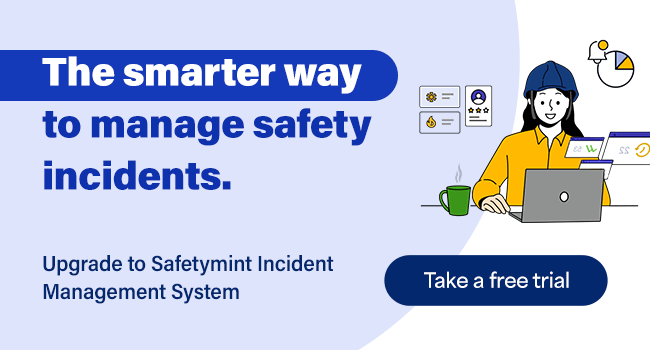Job Safety Analysis (JSA)

What is Job Safety Analysis (JSA)?
Job Safety Analysis (JSA) is a systematic process of evaluating and examining the tasks and procedures performed in a workplace in order to identify potential hazards and assess the risks involved. This process is performed to identify potential hazards that could lead to accidents or incidents and to determine the necessary control measures to eliminate or reduce the risk of injury or harm.
The purpose of JSA is to proactively identify, evaluate, and control hazards in the workplace before they lead to accidents or incidents. JSA is an important component of a comprehensive safety management program and helps organizations comply with occupational safety and health regulations such as OSHA and improve their overall safety performance.
Watch Safetymint in action
What are the advantages of JSA?
Below are some of the key advantages of conducting a Job Safety Analysis:
Improved Safety Performance:
JSA helps identify potential hazards and develop control measures to eliminate or reduce those hazards, leading to improved safety performance in the workplace.
Reduced Risk of Injury and Accidents:
By proactively identifying and controlling hazards, JSA reduces the risk of injury and accidents in the workplace.
Increased Awareness of Potential Hazards:
JSA promotes increased awareness of potential hazards and helps workers understand the steps they can take to avoid them.
Improved Compliance with Health and Safety Regulators:
JSA helps organizations comply with OSHA and other health and safety regulations by identifying and controlling hazards.
Improved Communication and Collaboration:
JSA promotes communication and collaboration between workers and management, leading to a more efficient and effective safety management program.
What are the steps involved in Job Safety Analysis?
Identifying the task
The first step in conducting a JSA is to identify the task that is to be analyzed. This involves selecting a task that is performed regularly in the workplace and that has the potential to cause injury or harm to workers.
Breaking down the task into individual steps
Once the task has been identified, it is broken down into its individual steps. This allows for a thorough evaluation of each step for potential hazards.
Evaluating each step for potential hazards
During the evaluation process, each step of the task is examined to identify potential hazards. This can involve observing workers performing the task, analyzing equipment and tools used, and considering the physical environment in which the task is performed.
Developing control measures to eliminate or reduce hazards
Once the hazards have been identified, control measures are developed to eliminate or reduce the risk of injury or harm. This can involve modifying the task, changing the equipment or tools used, providing additional training or protective equipment, or implementing other control measures as needed.
Implementing the control measures
The final step in JSA is to implement the control measures in the workplace. This involves ensuring that workers are trained on the new procedures, that the necessary equipment or protective gear is provided, and that the control measures are properly implemented and enforced.
Still on Excel for your safety management?
Safetymint digitizes your entire safety workflow. Save time and improve efficiency.
Request a 14-day free trialHazard Identification, Risk Assessment and JSA – what are the differences?
Hazard Identification
Hazard identification is the process of identifying potential hazards in the workplace. This can involve reviewing past incidents, conducting safety inspections, and involving workers in the hazard identification process.
Risk Assessment
Risk assessment is the process of evaluating the likelihood and severity of harm that may result from a particular hazard. This information is used to prioritize the hazards and determine the necessary control measures to reduce the risk of harm.
Differences between JSA and Risk Assessment
JSA is a more focused and detailed process that involves evaluating the hazards associated with a specific task, whereas risk assessment is a broader process that evaluates the risks associated with a workplace as a whole. JSA is a component of overall risk assessment and can be used to inform and support the broader risk assessment process.
JSA is a more focused and detailed process that involves evaluating the hazards associated with a specific task, whereas risk assessment is a broader process that evaluates the risks associated with a workplace as a whole. JSA is a component of overall risk assessment and can be used to inform and support the broader risk assessment process.

Importance of Safety Observation in JSA
Safety observation is the process of observing workers performing tasks and looking for potential hazards. This can be conducted by a supervisor, safety professional, or other trained observer.
Safety observation is an important part of JSA, as it provides valuable information on the hazards associated with specific tasks. This information can be used to inform the hazard identification and evaluation process, and to identify potential control measures to reduce the risk of harm.
Involving workers in the JSA process is important, as they are often the individuals most familiar with the tasks being performed and the hazards associated with those tasks. Worker involvement in JSA can also increase worker engagement and buy-in to the overall safety program, leading to a safer and more positive workplace.